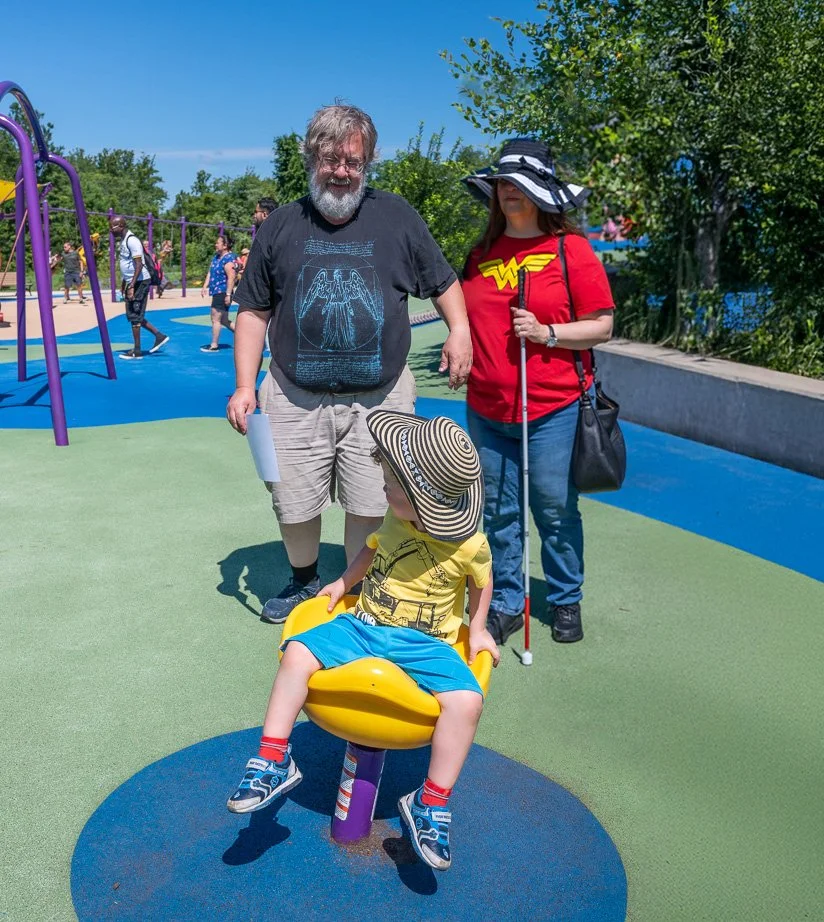Universal Design
Inclusive playgrounds use universal design to create play spaces that benefit everyone.
Everyone should be able to use and enjoy a fully inclusive playground.
Universal design ensures that this is possible. Universal design is the process of creating something that is usable for as many people as possible.
For a playground, universal design means that people of all abilities can use the playground as intended. This means that there are play spaces that benefit everyone. This creates maximum usability, or the most use by the most people. In other words, when a playground uses universal design, the playground creates safety and enjoyment for the most people possible and especially for people with disabilities.
There are seven principles of universal design and each are important.
Together, the seven principles can create a truly inclusive playground where people with and without disabilities can play together.
-
The playground is useable. The playground appeals to people with diverse abilities. For example, the play structure has ramps or slopes instead of stairs.
-
The playground supports a wide range of preferences and abilities. For example, swings at various heights and styles in the same area of a playground.
-
The playground is easy to understand by everyone. The playground does not require certain knowledge or concentration levels to understand it. For example, universal symbols used on park signs instead of only written words.
-
The playground communicates information effectively in different conditions. Information can be seen and used when the playground is crowded or empty. Communication also meets the needs of people with different sensory abilities. For example, textured warning strips on slides to indicate the slide is coming to an end.
-
The playground is safe and tries to reduce accidents. For example, swings are not too close to other parts of the playground so people don’t get kicked by accident.
-
The playground can be used by everyone without getting tired. For example, the material on the ground allows everyone to move around without a lot of effort.
-
The size of the playground and the space around parts of the playground allows everyone to play. For example, an activity board should be within reach of a standing or sitting person.



